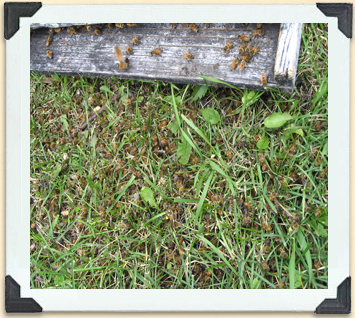Life in a Hive

One of the worker bees' tasks is to remove dead hive mates.
© University of Manitoba
Cleaning
A beehive is one of the cleanest and most sterile natural environments. Worker bees keep it that way to prevent disease. All cells need to be cleaned before they are reused for storing honey or new eggs.
Young worker bees also remove diseased and dead larvae or bees from the hive as quickly as possible, taking them as far away from the hive as they can. If they sting a large intruder (like a mouse) to death, it's too big for them to remove. Instead, they seal the body off with propolis (a sticky substance containing antimicrobial properties) that they collect from trees. Propolis is often called "bee glue".




